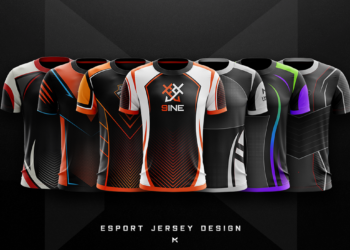The history of gaming is closely associated with the advancement of technologies. With more advancements in technologies, gaming companies are entering a new era of innovations. Thus, the world of gaming is closely associated with new and modern technologies. Sometimes when a particular game becomes quite popular, then technologies surrounding the game try to be as available as possible for most people to access the game. Mobile gaming advancements are one such example. With the gradual growth of mobile gaming, new and more advanced smartphones are being designed, keeping in mind the conditions of playing high-load games. Thus gaming and technology go side by side.
History Of Gaming And Associate Technology
The earliest history of gaming can be referred to as the practice of playing boards games. Gaming can be found even in the early 3500 BC where board games were considered recreational activities. Primitive technology to create board games from paper and cardboards and the accessories used to prevail in those times. From there, it evolved to card games. People played card games extensively across the 17th century. Further involvement of technology was there to polish the paper-cuts and furnish cards out of them. By 1843, board games were commercialized and officially published using printing technologies and colorful, attractive accessories.
With the invention of Monopoly in 1902, board games advanced to a new era of inventions. New fine technologies and micro-assembling were introduced to create a fine transaction-enabled board game. Makers used harder and more rigid cardboard to create the board base. By 1930 computers started to make their way into human life and thus followed computer games. Firstly simpler computer games were designed in the early 1950s. Scientists used to toggle with their inventions to pave the way for research, resulting in computer games. In 1970, the first video game was introduced by the name of Computer Space. After this, Ping came into existence, and gradually coin based arcade games grew popular. Companies carried out more software and hardware innovations to meet various gaming requirements and popular demands.
LAN GAMES
By the year 1975, the concept of joining forces in a game was introduced, and thus mod and LAN gameplay started to grow. The Dungeon and Avatar were such popular games featuring multiple player battles. Technology had to evolve to facilitate gaming cooperation among more than one person at a time. Thanks to more advancement of technology, by the 1980s home computers, started to feature disk spaces, and floppy disk was introduced. With the advancement of the internet and technology, online games were rapidly getting popular. Nintendo came up with varieties of arcade games that one can play online. Boardgame manufacturers were quick to avail the advancement of technology. They took the boards games online, and now one can play them via computers as well.
Read : NAZARA THE FIRST INDIAN GAMING COMPANY TO CONDUCT IPO
Effect Of Pro Gaming On The Technological Advancement
With the growing acceptance of esports culture and pro gaming modules, technology couldn’t have resorted to a backseat. Newer and advanced gaming tools were constantly a requirement for gamers to focus on the game better. For competitive tournaments at the international level, technology-based companies volunteered to be the main sponsors and promote their inventions. New and advanced generations of gaming processors, gaming mouse and keyboards were introduced. People started to use gaming mouse with more latency and sensitivity scale to up their in-game navigations. Mechanical keyboards were introduced to support more rapid key presses and make the system more durable. Technology leaped light years ahead just with the forthcoming of esports business.
Common people started to buy gears that pro players wear. Technological firms started to cash in the popularity of esports and gaming icons to up their sales. Requirements of Solid State Drives came into being with the advancement of more serious pro gaming. Ordinary hard disk drives were unable to support the growing features of advanced RPG and MMO games. Even gaming laptops were introduced to support gaming and portability into one unit. Cooling pads and cooling chambers were added to prevent the device from overheating. Many such technological advancements were ushered in only because of gaming requirements. Had it not been for the gaming community, one might not have even experienced such technological growth. Dedicated online servers were created as game chats rooms like discord. Streaming services were founded to stream professional gameplay.
Contribution Of Mobile Gaming
Mobile gaming played a big role in the advancement of technologies in the 21st century. Big screen devices and sensitive touches are a part of gaming advancements. New features like AMOLED screens and Full HD view enabled the depiction of actual colors and in-game descriptions more vividly. Smartphones now started to have dedicated game launchers to manage and boost the gaming experience. With more advanced high-level mobile games getting invented, the smartphone manufacturers started to incorporate PC-like features into the mobiles. Increased RAM and screen sizes are one such example.
Games like PUBG mobile, Call of Duty Mobile, and RPG like Lineage 2M was weighty games. Earlier at the beginning of mobile gaming history, games like snakes and ladder, bounce balls, and carom used to be there. From there, mobile gaming has advanced many steps and started to make spec-heavy games. These games alone can size up to 2 GB of space inside the smartphones. Therefore, tech companies started to brainstorm their way out of this problem, increased the overall ROM size of modern smartphones, and incorporated separate game launchers. Without higher RAM and processor support, high-order games are non-functional. Thus mobile technology companies had to step up their game and compete for gaming mobiles in the 21st century.
Thus, technology continues to develop under the influence of pro gaming. As long as the culture of gaming survives and continues to grow, technology will grow even further alongside the success of esports. There is no denying that most technological advancements of the modern digital age came from a longing year to play games at the highest level on compatible devices.









































